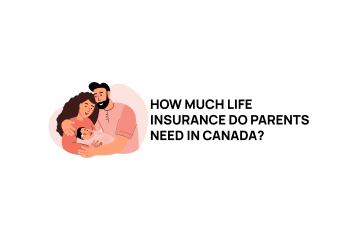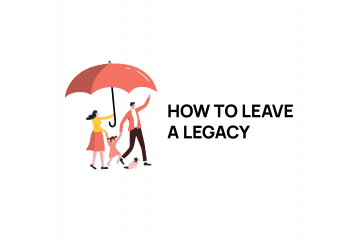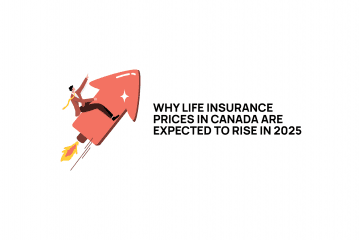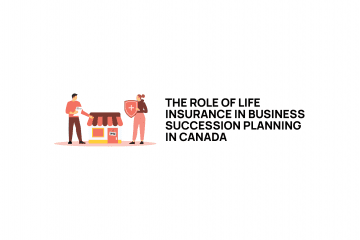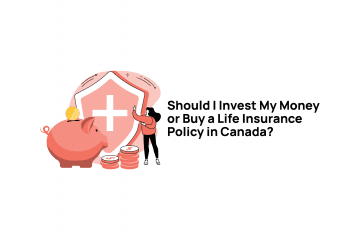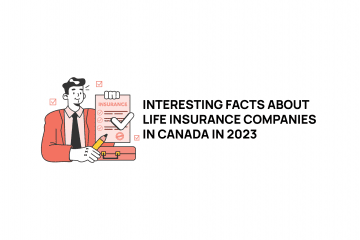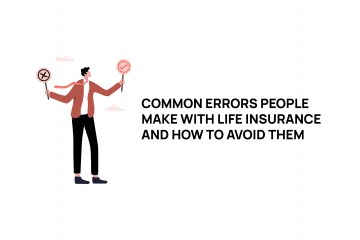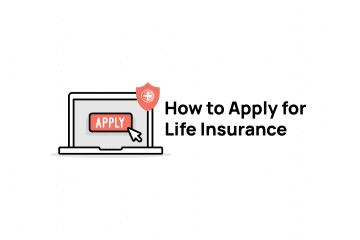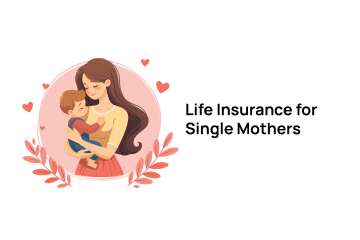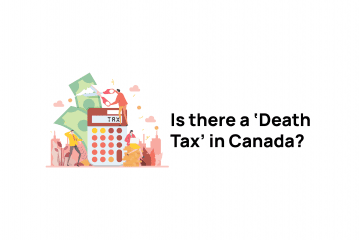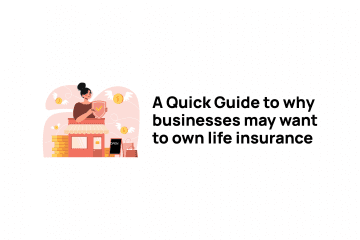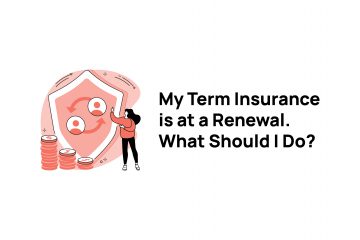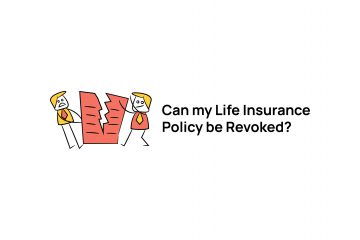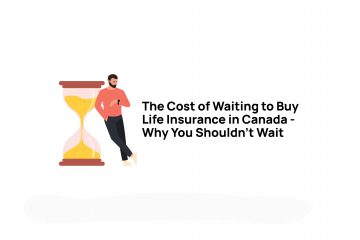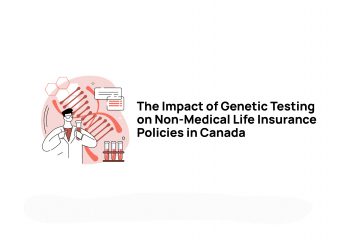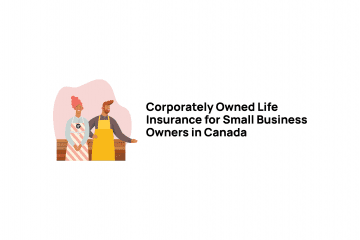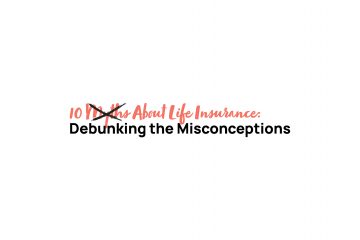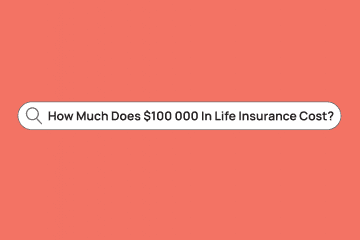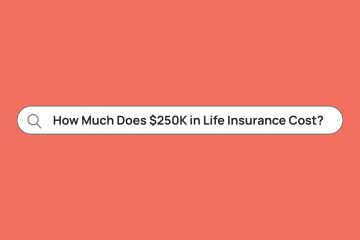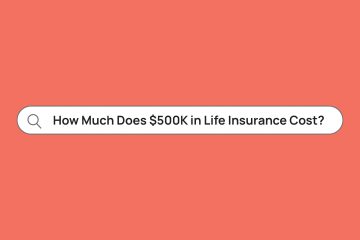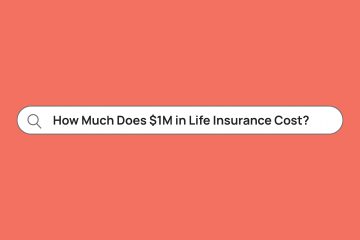In this article:
- What are life insurance premiums?
- What influences the cost of life insurance?
- What is the average cost of life insurance in Canada?
- What are preferred rates for life insurance?
- How often do you pay life insurance premiums?
- Is life insurance in Canada affordable?
- How to find a life insurance premium rate?
Life insurance is an important investment, especially for those with dependents and financial responsibilities. For many, however, the added cost that comes with life insurance makes the decision to buy coverage daunting. That is understandable enough: household budgets are tricky as is, with other bills and expenses piling up every month.
But a life insurance policy doesn’t have to be a massive expense: many policies can actually be very affordable. In this article, we’ll explain how life insurance pricing works in Canada, what influences the cost of life insurance, and how much you can expect to pay for a policy.
What are life insurance premiums?
To begin, it is important to understand how life insurance is paid for. In the insurance industry, the price of an insurance policy is called a premium. Typically, policy owners pay premiums in regular instalments to the insurance company to keep their insurance coverage in force. As long as premiums are paid over the course of a life insurance policy, life insurance providers will issue a death benefit to the policy’s beneficiaries if the insured dies during the coverage period. If premium payments are missed, the life insurance policy is at risk of lapsing, and no benefit will be paid.
Of course, life insurance premiums are not the same across the board. Life insurance companies take many factors into consideration when setting a premium rate, meaning that virtually every life insurance policy and its cost are customized to the policy holder.


What influences the cost of life insurance?
When applying for a life insurance policy, it is common to go through a fairly in depth questionnaire and, in many cases, a medical evaluation. These processes give life insurance companies the information they need to set a premium rate that matches both the policy and the potential risk of insuring a specific person. In short, the riskier someone is to insure, the higher the cost of life insurance will be. Below are some of the main factors that life insurance companies take into consideration when setting a premium rate for life insurance.
Type of life insurance policy
There are many different types of life insurance available and they all come with different premium ranges. Looking at the two broad categories of life insurance—term life insurance and permanent life insurance—there is a significant cost difference. Term life insurance, which provides coverage over a set number of years, typically has lower premiums than permanent life insurance, which provides lifelong coverage and a guaranteed death benefit. It also goes without saying that the size of the policy (i.e. the value of the death benefit) influences the cost of premiums. For example, a term life insurance policy with a death benefit of $100,000 will have significantly lower premiums than a term life insurance policy worth $500,000.
Age
One of the most important factors in determining the cost of life insurance is the applicant’s age. In short, the older a person is when they apply for life insurance, the higher their premiums will be. This is due to the simple fact that the risk of death increases with age. By elevating premiums for their older customers, risk averse life insurance companies protect themselves from the increased likelihood of paying a death benefit (for term life insurance) or paying the death benefit sooner (with permanent life insurance). On the other hand, if you apply for a life insurance policy when you are in your 20s or 30s, you will be able to lock in and benefit from lower premium rates even as you age.
Gender
Gender can also influence what life insurance premium rates you are offered. In general, because women have statistically longer life expectancies, they are eligible for lower life insurance premiums. In Canada, women have an average life expectancy of 84.2 years; men have an average life expectancy of 80 years. For life insurance companies, this makes men slightly riskier to insure, leading to a discrepancy in premium rates between genders.
Health
In order to be approved for many life insurance policies, it is necessary to undergo a health evaluation—typically including an in-depth questionnaire and a physical exam. This is because life insurance companies want to know if their clients have any underlying or potentially life-threatening medical conditions that would make them riskier to insure. Life insurance applicants with health conditions or who are at a higher risk of health issues are typically subject to higher premium rates than people in overall good health. Today, there are an increasing number of options for no medical life insurance, which does not require a medical evaluation. These policies are useful for those who are deemed uninsurable for traditional life insurance, but come with significantly higher premiums.
Smoker/Non smoker
For life insurance companies, one of the biggest health risks is associated with smoking tobacco. Smoking cigarettes, cigars, or vaping—even infrequently—can thus drive up your life insurance premiums by as much as double. The good news is that if you quit smoking you can qualify as a non-smoker after 12 months. Since the legalization of cannabis in Canada in 2018, life insurance companies do not consider infrequent recreational cannabis use as “smoking.”
Occupation
Life insurance companies also look at occupation in order to determine premium rates and insurability. Essentially, those with jobs that have higher accident and fatality rates, such as resource extraction workers, firefighters, construction workers, pilots, etc, will have higher premiums to pay than those with less physically risky jobs, such as office workers. Similarly, pursuing a high risk hobby, like deep sea diving or motorsport, can increase premium rates.
Get a free quote
What is the average cost of life insurance in Canada?
It is hard to pinpoint the overall average cost of a Canadian life insurance policy because there are so many variables. For example, for a 30-year-old non-smoking male, the average cost of a 20-year-term life insurance policy worth $100,000 is about $15 per month. The same policy for a 50-year-old non-smoking male is on average $45 per month. The table below will give you an idea as to the cost of 20-year-term life insurance policies based on age and gender.
| Male – Age 30 | Female – Age 30 | Male – Age 40 | Female – Age 40 | Male – Age 50 | Female – Age 50 | |
|---|---|---|---|---|---|---|
| 20-year-term policy worth $500,000 | $29.70 | $21.60 | $45.00 | $33.53 | $123.93 | $82.94 |
| 20-year-term policy worth $1 million | $52.20 | $35.24 | $84.11 | $60.08 | $236.30 | $153.79 |
*Rates are monthly and based on standard health, non smoker from RBC Life Insurance Company.
**Rates were quoted February 2022 and are not guaranteed. Final rates are determined after an application has been submitted.
If we look at whole life insurance policies, the average cost of premiums is higher. This is due to two main factors. First, whole life insurance is a permanent life insurance policy, meaning that there is a guaranteed death benefit to be paid out by life insurance companies. Second, whole life insurance policies come with an investment component, or cash value. This means that part of the premiums paid are put into an investment portfolio, where they will accrue in value. The cash value can be accessed by the policy holder in their lifetime and can be used as collateral for loans. Below are some of the average monthly premium rates for whole life insurance for non-smoking adults.
| Male – Age 30 | Female – Age 30 | Male – Age 40 | Female – Age 40 | Male – Age 50 | Female – Age 50 | |
|---|---|---|---|---|---|---|
| Whole life insurance worth $100,000 | $60.03 | $53.55 | $84.78 | $74.16 | $133.92 | $114.66 |
| Whole life insurance worth $250,000 | $140.85 | $126.00 | $204.75 | $178.20 | $327.60 | $279.45 |
What are preferred rates for life insurance?
In the insurance industry, life insurance providers group applicants into two categories: standard and preferred rates. Those that qualify for preferred rates have access to the lowest premiums. In general, this category is reserved for people who are non-smokers, are in good health, and have safe lifestyles. Factors taken into consideration are weight, blood pressure, cholesterol, as well as personal and family medical histories.
Those that don’t qualify for preferred rates, fall into the standard rate category. This group has a couple of subcategories to account for smokers and non-smokers. For example, “standard plus non-smokers” are defined as people who are in good health but may have mild or moderate health conditions, such as high blood pressure. This category of rates is higher than preferred but lower than rates for smokers or those with more serious health conditions.
In some cases, people may be deemed uninsurable based on their health or age, and will be denied traditional life insurance coverage. No medical life insurance and guaranteed issue life insurance are good alternatives, providing life insurance without the need to disclose medical records. Because life insurance companies take on a greater risk when insuring people through no medical policies, premium rates tend to be significantly higher than policies with medical underwriting.


How often do you pay life insurance premiums?
When purchasing a life insurance policy, insurance providers will often offer a range of payment modes. These determine the frequency with which you pay your premiums. The most common option is a monthly premium payment. However, some people may opt for a quarterly, semi-annual or annual premium payment structure.
It is easy to guess why monthly premium payments are so widespread: it breaks down the cost of the policy into smaller chunks that are easier to fit into a monthly household budget. Due to the fees incurred every month when paying premiums, however, this payment mode can end up costing more in the long run. So, if you have the means to pay for a whole year’s policy at once, you can save on processing fees.
With whole life insurance, there are other payment alternatives. For instance, with single pay, the policy holder pays for the entire life insurance policy up front. While this requires a large lump sum, the policy’s cash value has the advantage of starting off large, thus having greater earning potential. In addition to single pay, whole life insurance customers can choose to pay for their policy over a set period of time, like 10 or 20 years. With this type of policy, called limited pay life insurance, policy holders pay higher premiums over a set number of years, after which they can stop paying into their policy but still receive coverage. Policy holders can also use the policy’s cash value and dividends as income. Because they are paid over a condensed time frame, premiums for limited pay life insurance are higher than standard whole life insurance.
Is life insurance in Canada affordable?
Short answer: it can be. If the cost of life insurance is your primary concern, a term life insurance policy is reliably the best route. If you are young (30 and under) and in good health, a 20-year-term life insurance policy worth $250,000 can cost as little as $15/month. Barely more than the cost of a Netflix subscription. This type of policy can provide financial protection to your family and dependents at a crucial time. For instance, many people buy term life insurance to cover sizeable debts (like mortgages) and provide income replacement until their children grow up. The downside is that if the policy holder survives the coverage term, the policy simply lapses.
If you are interested in leveraging a life insurance policy to meet long-term financial goals, a whole life insurance policy is probably the way to go. Premium rates for whole life insurance are significantly higher than term life insurance, but the tradeoff is lifelong coverage, guaranteed death benefit, and the potential to earn money through investments. As shown in the tables in a previous section, while a 20-year term life insurance policy worth $500,000 will cost a non-smoking 30-year-old male about $32/month, a whole life insurance policy worth half that ($250,000) would cost the same man about $140/month. Of course, a portion of those premiums is going into an investment portfolio and the policy holder’s beneficiaries are guaranteed a death benefit.
It really comes down to what type of financial protection you are looking for and how much you want to budget for life insurance premiums.
Life Insurance Cost – Compare Quotes
How to find a life insurance premium rate?
If you are in the market for a life insurance policy, it is always a good idea to shop around. Different life insurance providers offer different types of policies and have different rates. While requesting life insurance quotes once necessitated working directly with an insurance agent or calling up various insurance companies, it is now much simpler to access personalized quotes.
One way to find out what types of life insurance premiums you are eligible for is to use online quoting tools offered by various Canadian life insurance companies. Most insurance companies will ask for some basic information and generate a quote that reflects your needs. For many people, however, it is more helpful to use a quote comparison tool. Life Insurance Canada’s instant quote tool quickly generates custom quotes from Canada’s top life insurance providers.
All you need to do is provide your name, date of birth, smoking status, what size and type of policy you want and we’ll present you with a number of options. Our online tool also provides helpful information, like the life insurance company’s financial strength and customer ratings. From there it is easy to access the policy’s full application form. It is important to remember that online quoting tools provide an estimate. Applicants must provide more in depth information in a formal life insurance application, which life insurance companies evaluate in the underwriting process. It is through the underwriting process that insurability and premium rates are decided.
If you want to learn more about how premiums are decided and what types of policies you are eligible for, get in touch with us or book a call with one of our life insurance specialists.


